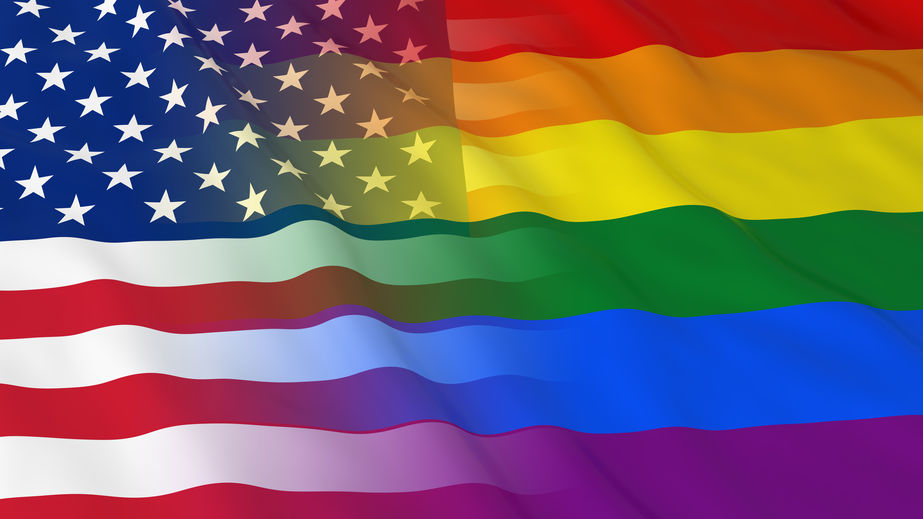The Number of Americans Identifying as LGBTQ Has Doubled in a Decade
March 14, 2022 by Justin Lehmiller
I have been studying and writing about sexual orientation and sexual identity for the better part of the last two decades. One of the most interesting things I have seen in that time is a dramatic rise in the number of Americans who identify as LGBTQ.
When I first started working in this area as a graduate student in the early 2000s, the most frequently cited statistics came from the National Health and Social Life Survey (NHSLS). This was the first nationally representative sex study ever conducted in the United States. The results, originally reported in 1994, revealed that 2.8% of men and 1.4% of women identified as gay or bisexual [1]. It wasn’t common practice at that time to ask about other minority sexual (e.g., queer) and gender identities (e.g., trans), so these numbers aren’t necessarily reflective of the full scope of people who identified as LGBTQ in the 90s; however, they pointed to a fairly low percentage.
This was surprising to a lot of people at the time. After all, in the 1940s and 50s, Alfred Kinsey reported that about 10% of the men he interviewed were predominately or exclusively gay. However, Kinsey’s work wasn’t based on a representative sample of the population, so there were always some questions about how reliable his figures were.
Since the NHSLS, several national public opinion polls have emerged that point to higher and steadily increasing figures compared to the 1990s. For example, Gallup has conducted several large surveys of random samples of the U.S. population over the last decade asking people whether they self-identify as LGBTQ and this is what they’ve found:
- In 2012, 3.5% identified as LGBTQ
- In 2013, 3.6% identified as LGBTQ
- In 2014, 3.7% identified as LGBTQ
- In 2015, 3.9% identified as LGBTQ
- In 2016, 4.1% identified as LGBTQ
- In 2017, 4.5% identified as LGBTQ
- In 2020, 5.6% identified as LGBTQ
- In 2022, 7.1% identified as LGBTQ
As you can see, since 2012, there has been a 100% increase in the number of Americans identifying as LGBTQ, which is a very substantial change.
In the 2022 data, Gallup provided a breakdown of the numbers, which revealed that 2.5% of Americans identify as gay or lesbian, 4% identify as bisexual, 0.7% identify as transgender, and 0.3% identify with other labels (e.g., queer). Thus, bisexuals make up the single largest contingent of the LGBTQ community, representing more than half (57%) of all LGBTQ-identified adults.
However, where the numbers get even more striking is when you look at generational differences in identification. Among Generation Z (persons born between 1997-2002), 20.8% identify as LGBTQ. For Millennials (those born between 1981-1996), the number is 10.5%. For the oldest Americans (those born before 1946), the corresponding number is just 0.8%. Those born between 1946 and 1980 register between 2-4%.
The pattern for specific identifies looks very similar across generations: all identities are more common among Gen Z compared to older adults. Also, bisexuals make up the lion’s share of LGBTQ-identified adults among Gen Z and Millennials. Specifically, for those in Gen Z, 72% of LGBTQ adults say they’re bisexual, compared to 57% for Millennials. Interestingly, however, for the oldest generations (Boomers and beyond), gay and lesbian adults outnumber bisexuals.
The overall rise in LGBTQ identification, therefore, seems to be more about a substantial rise in bisexual identification among younger adults, as opposed to a general rise across the board.
Consistent with this finding, results from the General Social Survey comparing data from 2008-2018 found that the number of gay and lesbian adults remained stable over time, while the number of bisexuals tripled—with the rise being driven primarily by younger (not older) adults.
It will be interesting to see what happens going forward. With 1 in 5 young adults today identifying as LGBTQ, we can probably expect that the overall number of LGBTQ-identified Americans will rise going forward (after all, today’s young adults will eventually become the older adults of the future).
Also, while we cannot say with certainty what is driving the change in bisexual identification, it’s unlikely to be due to actual shifts in patterns of attraction; rather, the most plausible explanation is that people today (and especially young adults) feel more comfortable acknowledging minority identities and non-heterosexual attractions because they are much less stigmatized than they were in the past.
At the same time, there has been a significant decrease in religiosity in the US in recent years. Given that same-sex attraction and behavior are considered sinful in many religions, the trend toward lower religious identification may open the door to acknowledging and identifying with these attractions.
Lastly, I should mention that while the rise in bisexual identification has been greeted with some skepticism on social media, it’s not surprising to me. And I think there’s still a fair amount of room for further growth. For example, as I report in my book Tell Me What You Want, for which I surveyed more than 4,000 Americans about their sexual fantasies, I found that 1 in 4 men and more than half of women reported having had a fantasy about someone of the same sex/gender before. Other studies have yielded similar findings. So if more people start acknowledging these attractions and incorporating them into their sexual identities, we may see the numbers rise even further.
[1] Laumann, E. O., Gagnon, J., Michael, R., & Michaels, S. (1994). The social organization of sexuality: Sexual practices in the United States. Chicago: University of Chicago Press.
Want to learn more about Sex and Psychology? Click here for more from the blog or here to listen to the podcast. Follow Sex and Psychology on Facebook, Twitter (@JustinLehmiller), or Reddit to receive updates. You can also follow Dr. Lehmiller on YouTube and Instagram.
Image Source: 123RF/fredex8

Dr. Justin Lehmiller
Founder & Owner of Sex and PsychologyDr. Justin Lehmiller is a social psychologist and Research Fellow at The Kinsey Institute. He runs the Sex and Psychology blog and podcast and is author of the popular book Tell Me What You Want. Dr. Lehmiller is an award-winning educator, and a prolific researcher who has published more than 50 academic works.
Read full bio >


